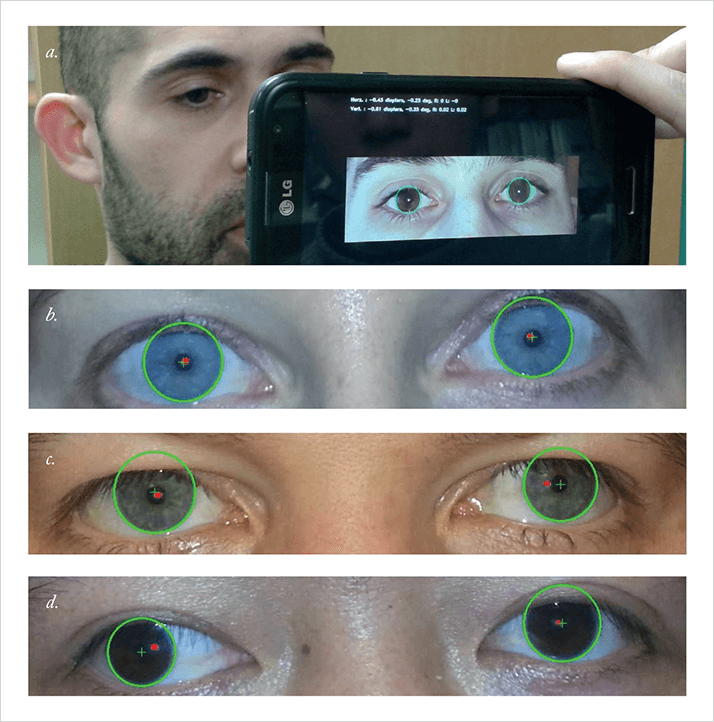
The importance of early strabismus detection cannot be emphasized enough. Strabismus may cause double vision and lead to amblyopia in children, and early detection drastically improves the chances of successful treatment. However, detection in people of any age can be rather challenging: small (and intermittent) deviations can go undetected, and it’s harder to screen people who are unable to speak – such as infants and adults with brain injury.
Shrinivas Pundlik and his colleagues Matteo Tomasi, Kevin Houston and Gang Luo at the Schepens Eye Research Institute in Boston, MA, decided to address the issue by developing an accessible, accurate tool for strabismus screening via a smartphone app (1). “The ubiquitous nature of smartphones and their increasingly powerful hardware provides an ideal platform for performing strabismus measurement, photo-documentation, and remote monitoring,” explains Pundlik. “We felt that there was a need for an easy to use, accessible, and inexpensive tool for strabismus screening that could potentially be used in a variety of settings such as primary care clinics, community level screening programs, as well as at home,” he adds.
How does the app work? It measures a corneal light reflex decentration, and using it is simple – launch the app, point the rear camera of the smartphone at the patient, and align their eyes with the detection box on-screen (Figure 1a). The user then takes a photograph using the flash, and the app automatically computes the deviation between the two eyes based on the established Hirschberg ratio. Currently, the app delivers the results by overlaying the detection of the limbus boundary and the corneal reflection on the captured image, to allow the user to check the accuracy of the localization. The deviations in horizontal and vertical directions are displayed in prism diopters (Figures 1b–d). What’s next? The team have two versions of the app planned, explains Pundlik: one for clinical use, and one for home. The clinical app would provide clinicians with detailed strabismus measurement parameters and photo-documentation options, in order to provide a quick screening tool for use alongside other tests, and also to provide photographic evidence for monitoring the condition. The home use version would provide a simple “yes/no” answer to the user with the option of securely sending the captured data to a doctor for further evaluation.
References
- S Pundlik, et al., “Preliminary Evaluation of a Mobile App for Strabismus Screening”, IOVS, 56, ARVO E-Abstract 5212 (2015).
